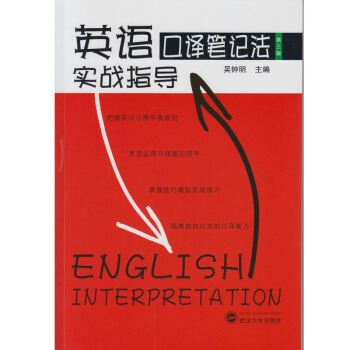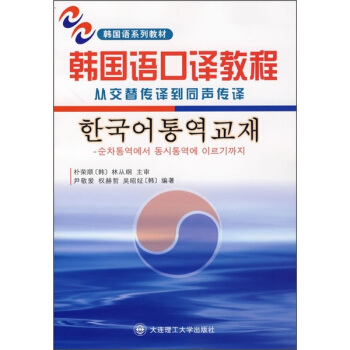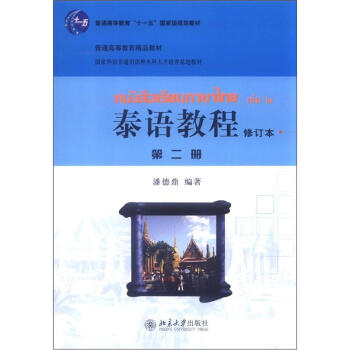

具体描述
内容简介
《英语学术论文及留学文书写作》的设计主要涵盖了两个板块。英语学术论文写作部分全方位地分析和展示了英语学术论文写作的技巧与诀窍,从论文选题、确定主题句、草拟大纲、资料的搜集与整理、记笔记的有效方法、论文初稿的撰写与修订、论文完稿等方面详尽地讲解了英语学术论文写作的各个必要环节。留学文书写作部分介绍了个人陈述、研究计划、简历等主要留学文书的写作,更搜集了近年成功申请国外各类知名院校的申请信,并从其结构设计、语言选择等方面给出了详尽的分析和归纳。同时,《英语学术论文及留学文书写作》同样适用于前往英语国家进修或学习的职业人士阅读借鉴。目录
Chapter 1 Application LettersAdmissions Essay
Cover Letter
Resume
Research Proposal
Letter of Recommendation
Samples of Application Letters
Exercises
Chapter 2 The Research Paper
What is the Research Paper
Types of Research
Why Should We Write the Research Paper?
Component Parts of the Research Paper
Features of Effective Research Paper
Steps of Writing the Research Paper
Exercises
Chapter 3 Selecting a Topic
Selecting a General Subject
Narrowing Down the Scope of Your Subject to a Specific Aspect
Formulating the Final Topic
Samples of Some Suggested Topics
Exercises
Chapter 4 Reviewing Related Literature and Evaluating Source Materials
The Purpose of Literature Review
Classification of Source Materials
Evaluating Source Materials
Make Your Sources Work for You
Writing Literature Review
Exercises
Chapter 5 Note-taking
What is Note-taking
Where to Take Notes
Content of Notes
Guidelines for Card Note-taking
Types of Notes
Tips on Note-taking
Precautions against Plagiarism
Exercises
Chapter 6 Writing the Thesis Statement
What Is a Thesis Statement
Examples of Working Thesis
What Makes a Good Thesis Statement
Division of Thesis Statements
Constructing the Thesis
How Do I Know If My Thesis Is Strong
Alternatives to the Thesis Sentence
Exercises
Chapter 7 Writing the Outline of the Research Paper
What Is an Outline
The Role of the Outline
Types of Outline Symbols
Types of Outlines
Stylistic Theory of Outlining
Guidelines to Write the Outline
Modes of Arrangement
Conventions for Drawing an Outline
Exercises
Chapter 8 Drafting the Research Paper
How to Write the Overall Draft
Writing the Introduction
Review of Literature
Writing the Methodology Section
Writing the Results Section
Writing the Discussion Section
Writing the Conclusion and Recommendations Section
Constructing Paragraphs
Writing the Topic Sentence
Exercises
Chapter 9 Revising, Editing and Proofreading
Revising: Cultivating a Critical Eye
Editing Making Your Writing Clear
Proofreading: the Final Touches
Exercises
Chapter 10 Supplementary Documents to Complete a Research Paper
Deciding a Format for the Research Paper
Title Page
Writing the Abstract
Keywords
Table of Contents
Acknowledgements
Appendices
Exercises
Chapter 11 Research Paper Citations
Introduction
Different Styles of Citations
MLA Formatting and Style Guide
MLA Works Cited Example Page
APA Formatting and Style Guide
Exercises
Chapter 12 How to Present a Paper
Planning the Presentation
PPT-Creating Speaking Notes
Delivery of Presentation
Asking and Answering Questions
Exercises
Bibliography
精彩书摘
Is the essay free of careless errorsHow well is the essay organized? Is it easy to read and to follow the authors ideas?
Writing an effective admissions essay or personal statement takes lime to consider the topic,plan your points, organize and structure your argument, draft the essay, evaluate whether youhave addressed all of the above issues, seek feedback, and write a final version. Therefore, it isbetter for you to start your writing far ahead of the deadline to ensure that you write an appropriateand effective admissions essay. Dont take shortcuts because the admissions essay can be whatmakes the difference between acceptance and rejection.
How to organize your graduate admissions essay
There are several different ways youcan structure your essay but the most common formatincludes an introduction, a body, and a concluding paragraph.
1. Introduction
The introduction is the most important part of the essay, especially the first sentence. Thefirst sentence introduces your essay and a bad introduction, in person or in writing, isdetrimental to your admissions chances.
Keep the readers interested by making them continue to read your essay after reading thefirst paragraph.
The first sentence should be unique and compelling, possibly thought-provoking orattention-grabbing.
First sentence may explain your desire to study the subject of interest or discuss themotivation that influenced your desire to study the subject of interest. State it in a creative manner.
The sentences following the first sentence should provide a brief explanation that supportsthe claim stated in the first sentence.
2. The body
The body should include several paragraphs that provide detailed evidence to support thestatement made in the introductory paragraph. The paragraphs should flow by usingtransitions and resolutions.
Each paragraph should have a transition, which starts each paragraph with a topic statementthat will be the theme of that paragraph.
Each paragraph should have a resolution, which ends each paragraph with a meaningfulsentence that provides a transition to the next paragraph.
前言/序言
《英语学术论文及留学文书写作》是“高级英语阶段系列教程”提高阶段的主干教材之一。本书的主要对象是大学公共外语高年级扩展阶段的本科生、英语专业学生、高年级研究生(硕士生、博士生),另外也可供科研人员和科技编辑案头查阅和浏览。本书的设计主要涵盖了两个板块,包括提高学习者国际学术交流能力和科技文章撰写能力的英语学术论文写作指导及旨在帮助欲前往英语国家深造的本科高年级学生和研究生撰写留学文书的写作指导。本书首先是英语学术论文写作的指南读物。书中全方位地分析和展示了英语学术论文写作的技巧与诀窍,从论文选题、确定主题句、草拟大纲、资料的搜集与整理、记笔记的有效方法、论文初稿的撰写与修订、论文完稿等方面详尽地讲解了英语学术论文写作的各个必要环节。本书在每个章节理论讲解的基础上,援引了新近在国内外学术刊物上发表的论文作为实例,要求学习者积极主动地分析并掌握各章节所讲解的理论知识,做到活学活用,由此实现真正意义上的有效教学。此外,本书不仅详尽地阐述了学术论文写作的全过程,还介绍了针对论文设计多媒体演示文稿的方法,以及参加学术会议和论文答辩的一些相关技巧,真正实现对论文撰写人从论文选题到完稿,再到口头呈现研究结果作出整体指导。
本书的留学文书写作部分目的在于帮助有意在国外继续深造的学习者成功地赢在申请的第一步。随着高等教育的深化,越来越多的本科毕业生及研究生计划在结束本阶段学习后继续深造。除了必须具备的学术成绩、语言成绩等“硬件”外,还需要包括个人陈述在内的一套完整的留学申请材料;申请者应最大限度地通过留学文书成功反映出个人的个性和才智,充分地向人展示出自己的学术成就、学术观点、智慧和所具备的其他独特才能。本书留学文书写作部分不仅介绍了个人陈述、研究计划、简历等主要留学文书的写作,更搜集了近年成功申请国外各类知名院校的申请信,并从其结构设计、语言选择等方面给出了详尽的分析和归纳。
本书在编写过程中注意突出高级英语阶段英语教学层次较高、应用面广、学术性强的特点,注重培养学习者学术英语写作能力,特别是使用英语写作和发表专业学术论文的实际能力;并力求从实际出发,注重教材的先进性、实用性、针对性和导向性,确保内容全面、材料翔实、例证丰富、语言规范。全书的写作语言为英语,做到“用英语讲英语”,更清晰准确地讲解对英语这一语言工具的有效驾驭,提高学习者的英语学术研究水平与论文撰写能力。
最后,限于编者的水平和其他客观原因,书中所述内容难免有遗漏之处,敬请同行批评指正。
用户评价
这本书的装帧设计倒是挺讲究的,封面采用了比较沉稳的深蓝色调,配上烫金的书名,一眼看上去就给人一种专业和严谨的感觉。我原本以为这种类型的书籍,内容会像教科书一样枯燥乏味,但翻开目录后,发现编排逻辑性很强,层次分明。比如,它开篇并没有直接切入写作技巧,而是花了大篇幅去讲解“学术思维”的构建,这一点非常出乎我的意料,也正中我的下怀。很多工具书只教你怎么堆砌复杂的句式,但这本书似乎更注重“内功心法”的修炼,引导读者如何像一个真正的学者那样去思考论点、组织论据。特别是其中关于“批判性阅读与文献综述”那一部分,作者提供的框架清晰易懂,不像市面上很多书籍那样只会泛泛而谈,它给出了非常具体的步骤和示例,比如如何快速定位一篇论文的核心贡献,以及如何避免在综述中陷入简单的“复述”陷阱,而是要进行有效的“对话”。我个人觉得,对于初次尝试撰写英文学术论文的研究生来说,这本书无疑提供了一个非常坚实的入门指南,它不仅仅是教你写,更是教你“如何像一个研究者一样去表达”。那种对细节的把控,让人感觉作者一定是长期在一线浸泡过的资深教育者,而不是一个纸上谈兵的理论家。
评分我一直认为,好的写作指导书,应该能引导读者从“模仿”走向“创新”。这本书在“风格与修辞”的处理上,展现出了极高的水准。它没有陷入到晦涩的文学理论中去,而是非常务实地将修辞手法与学术或职业写作的目的紧密结合。我印象特别深的是关于“精准用词”的讨论,它不仅列举了常见的同义词辨析,还进一步分析了这些词汇在不同语境下的“情感色彩”和“专业权重”。例如,区分"achieve"和"accomplish"在报告中的细微差别。更令人称道的是,作者讨论了如何通过句式结构的变化来调整文章的“语流节奏”,这使得原本可能显得生硬的学术文本,读起来也具有一定的音乐性和流畅感。这种对文字背后力量的深刻理解,让我在阅读时感到非常受启发。它教会我,写作不仅仅是信息的传递,更是一种有效的说服艺术。对于追求更高层次表达的读者,这部分内容提供了从“合格”迈向“卓越”的关键一步。
评分我对这本书的期待主要集中在实用性和操作性上,尤其是在准备留学申请文书方面,我希望能找到一些突破性的见解。这本书的“个人陈述(PS)与动机信(SOP)”章节,给我的感受是“深入骨髓的解剖”。它没有停留在“展示你的成就”这种老生常谈的建议上,而是着重分析了不同国家、不同项目对文书的“潜台词”要求。比如,它细致地对比了英联邦体系和北美体系在考察申请人“动机”上的微妙差异,这一点非常精辟。我特别欣赏作者对于“故事化叙事”的讲解,它提供了一个“STAR原则的升级版”,教我们如何将看似平淡的经历,转化为能引起招生官共鸣的、有逻辑线索的个人发展轨迹。其中关于如何处理“弱项”或“失败经历”的讨论,更是教科书级别的处理方式——它不是让你遮掩,而是教你如何将其转化为展示韧性和学习能力的机会。这种对申请文书背后的“心理学”的洞察,使得这本书的价值远超一般的“模板大全”。读完这一部分,我感觉自己对于如何清晰、有力地表达“我是谁”和“我为何适合这个项目”有了全新的认识,不再是空洞地罗列GPA和奖项,而是构建了一个有血有肉的申请形象。
评分作为一名需要经常处理跨文化交流写作任务的职场人士,我更关注的是那种能快速提升邮件和报告专业度的内容。这本书的第三部分,关于“商务与专业英语写作”的部分,恰如其分地满足了我的需求。它的切入点非常新颖,不像传统的商务英语书籍那样专注于语法纠错,而是聚焦于“语境的得体性”和“效率最大化”。书中有一小节专门讨论了如何撰写高影响力的项目提案(Proposals),它提供了一套非常简洁的“三段式”结构,专门针对时间紧迫的决策者。作者强调的“少即是多”的原则在邮件写作中体现得淋漓尽致,它分析了为什么过长的邮件通常会被忽略,并提供了具体的缩写技巧和专业术语的恰当运用场景。此外,书中关于如何清晰表达“拒绝”或“异议”的措辞建议,也极为实用,既能维护专业关系,又能明确传达信息,避免了文化冲突带来的尴尬。整体来看,这部分内容如同一个高效率的“写作加速器”,帮助读者在有限的篇幅内,实现最大的信息传递效果和最积极的职业形象塑造。
评分从排版和辅助学习资源的友好度来看,这本书的设计也颇具匠心。首先,纸张选择偏哑光,长时间阅读眼睛不容易疲劳,这是一个小细节但非常加分的地方。其次,书中穿插了大量的“写作自检清单”(Checklists),这些清单非常具体,涵盖了从格式规范到逻辑连贯性的方方面面,方便读者在完成初稿后进行系统性的自我审查。我尤其喜欢它在每章末尾设置的“常见误区警示”栏目,这些错误往往是我自己写完后容易忽略的,比如在引用时对标点符号的坚持,或者在过渡句中使用过于口语化的连接词。这些小小的提醒,就像一位耐心的导师在旁边随时指导。此外,书后附带的“资源索引”,推荐了一些高质量的在线词典和语料库,对于希望进行深度自我提升的读者来说,提供了极大的便利。这本书的整体体验,是那种让你感觉作者真的站在读者的角度,为你学习旅途中的每一步都铺好了垫脚石,非常贴心且全面。
评分服务很周到,使用效果很好!
评分好一般
评分写的不错,对于留学文书写作很有实在的帮助!
评分比较不错的书,值得一读
评分不怎样,书中例子太少了
评分好一般
评分正需要提前了解这些内容,很实用
评分不错的教辅材料,好评!
评分有点贵 薄还
相关图书
本站所有内容均为互联网搜索引擎提供的公开搜索信息,本站不存储任何数据与内容,任何内容与数据均与本站无关,如有需要请联系相关搜索引擎包括但不限于百度,google,bing,sogou 等
© 2025 book.coffeedeals.club All Rights Reserved. 静流书站 版权所有

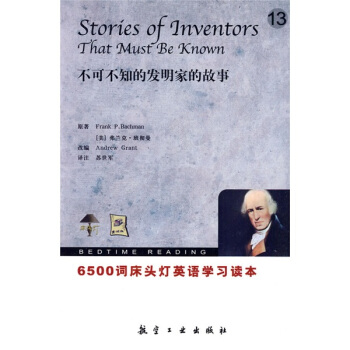


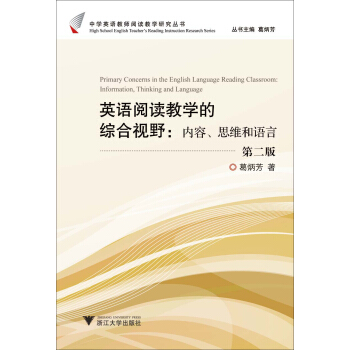


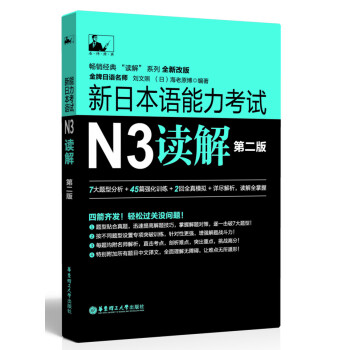



![莎士比亚十四行诗(精装版)(英诗经典名家名译) [The Sonnets of William Shakespeare] pdf epub mobi 电子书 下载](https://pic.windowsfront.com/12006275/582d4de2N09c15e1b.jpg)

